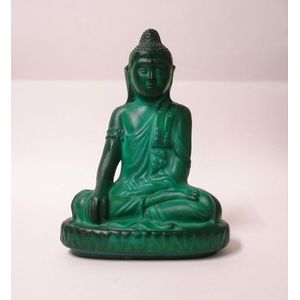Chinese Bronze Guanyin Figure, Qing Dynasty
A Chinese bronze standing figure of Guanyin, Yütang Shisou mark, Qing Dynasty (1644-1912), nationalistically cast figure standing on a cloud, turning slightly to the left with hands and forearms held before her, dressed in a flowing robes adorned with silver-thread inlay scrolls, wearing a beaded necklace of seeded studs, the reverse with a four-character inscription in seal-script, 49.3 cm, wood stand, Compare with Sotheby's Paris,16 December, 2015,lot 42, Christie's New York, 27 November, 1991, lot 49, Christie's London, 8 June,1992, lot 192, Sotheby's London, 6, December, 1994, lot 31, and Christie's London, 9 June, 1997, lot 269 for similar examples. Provenance: Old private ACT collection
You must be a subscriber, and be logged in to view price and dealer details.
Subscribe Now to view actual auction price for this item
When you subscribe, you have the option of setting the currency in which to display prices to $Au, $US, $NZ or Stg.
This item has been sold, and the description, image and price are for reference purposes only.
- Bronze - An alloy of copper and tin, traditionally in the proportions of about 9 parts of copper to 1 part of tin.
The discovery of bronze in Western Asia in the 4th century enabled people to create metal objects which were superior to those previoulsy possible because of its strength and hardness, and it has been used throughout the world for weapons, coins, tools, statuary and other decorative items.
It is very fluid in a molten state, and its hardness, strength when set, and non-corrosive properties makes it most suitable for casting sculpture. - Ming Dynasty - The Ming Dynasty was a ruling dynasty of China from 1368 to 1644. It succeeded the Yuan Dynasty and preceded the Qing Dynasty. The Ming Dynasty was established by Zhu Yuanzhang, a former Buddhist monk who became a rebel leader and eventually overthrew the Mongol Yuan Dynasty. During the Ming Dynasty, China experienced a period of relative stability and prosperity. The government was centralized and bureaucratic, with the emperor at the top of the hierarchy. The Ming Dynasty is known for its cultural achievements, including the development of porcelain, the invention of movable type printing, and the construction of the Great Wall of China.
- Qing Dynasty - The Qing Dynasty was the last imperial dynasty of China, ruling from 1644 to 1912. It was established by the Manchu people, who originated from the northeastern region of China. The Qing Dynasty was preceded by the Ming Dynasty and followed by the Republic of China.
This item has been included into following indexes:
Visually similar items

A Chinese bamboo root figure of a sage, early Qing dynasty, 17th century, seated in a voluminous robe with hands clasped around his knee, 18 cm high
Sold by
in
for
You can display prices in $Au, $US, $NZ or Stg.

Near pair Chinese ceramic Mud Men figures. Red glaze, on wooden stands. Height 35 cm (total each)
Sold by
in
for
You can display prices in $Au, $US, $NZ or Stg.

An Art Deco heavy malachite glass Buddha, traditional lotus position. Height 20 cm, width 15 cm
Sold by
in
for
You can display prices in $Au, $US, $NZ or Stg.

Pair of bronzed cat bookends, height 14 cm
Sold by
in
for
You can display prices in $Au, $US, $NZ or Stg.
